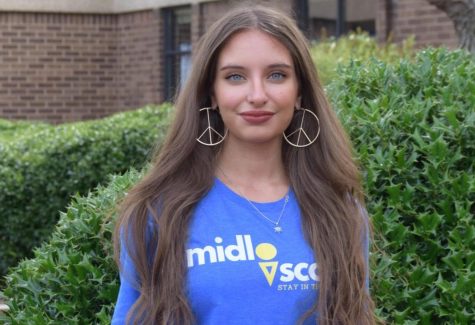The topic of affirmative action in higher education has recently returned to the courtroom. Students for Fair Admissions (S.F.F.A) is currently involved in cases against Harvard and University of North Carolina that are both set to be heard by the Supreme Court. The Court has recently announced that it will consolidate both of the cases into a total of a one-hour hearing where S.F.F.A. will assert its position that the admission policies of the schools discriminate against Asian American and white applicants.
The concept of affirmative action has been present within America since the 19th century but did not enter American jurisprudence in its modern form until 1961 when it appeared in President Kennedy’s Executive Order 10925. Affirmative action is a way for workplaces and educational institutions to prevent discrimination among applicants and address prior discrimination by consciously including qualified members of particular groups that are often underrepresented in these environments.
This case is not the first time affirmative action has made an appearance in the Supreme Court, however. Since its introduction, the Supreme Court has heard five significant cases relating to affirmative action.
Similarly, it is not the first time the S.F.F.A. has been involved in significant legal cases. However, the lawsuits in these cases were not orchestrated by a student, but rather by former stockbroker Edward Blum. Serving as the President and creator of the organization, Blum has been behind more than two dozen lawsuits challenging racial preference law. One of the most prominent cases he has been a part of, and won, was when he contested a portion of the Voting Rights Act of 1965, which is widely considered one of America’s most important pieces of civil rights legislation.
In response to this lawsuit, Harvard maintains that it “does not discriminate against applicants from any group in its admissions processes,” and states “we will continue to vigorously defend the right of Harvard, and other colleges and universities, to seek the educational benefits that come from a class that is diverse on multiple dimensions, from its capacity for academic excellence to its ability to help create a campus community that gives each student the opportunity to learn from peers with a wide variety of academic interests, perspectives and talents.”
This case has brought with it an uproar of heated debates among many involved in higher education and civil rights activism as a whole. For example, Rachel Kleinman, senior counsel at the NAACP Legal Defense and Educational Fund, claimed that Blum’s opposition to affirmative action stemmed from “this fear of white people that their privilege is being taken away from them and given to somebody else who they see as less deserving.” Blum countered with his own upbringing and experience with anti-Semitism in the South during the 1950s and ‘60s.
Armand Derfner, a civil rights lawyer and constitutional law scholar in residence at the Charleston School of Law in South Carolina, also referenced his experiences with anti-Semitic discrimination and empathized with the Asian American community. However, he does not believe that protecting Asian Americans was Blum’s true motivation behind the lawsuits.
After certain restrictions were placed on affirmative action, the Supreme Court has still allowed public universities to use “holistic” processes in admissions that achieve the same results indirectly. However, studies have shown that, even with these alternative processes, a complete ban on affirmative action in higher education would have a devastating effect on diversity. When considering Mark Long, a professor of Public Policy and Governance at the University of Washington, and Nicole Bateman at the Brookings Institution, they found that banning affirmative action leads to a long-term decline in Black, Latina and Native American students being admitted to public universities and that alternative policies are inadequate.
The study was centered around public college selection statistics in Alabama, California, Florida, Georgia, Louisiana, Mississippi, Texas and Washington, in which affirmative action was repealed or banned by public ballot or circuit court rulings.
Another study based on internal data at UC-Berkeley found that a ban on affirmative action significantly widened the under-representation gap. Before the ban, the gap was 14.9 percentage points. The following year, it widened to 24.9 percentage points and, by 2015, had jumped to 34.4 percentage points. Researchers noted that this trend was “repeated across many of the universities [they] included in [their] study.”
On average, in the year before a state’s affirmative action ban, the amount of under-represented students enrolled in college was 15.7 percentage points lower than their representation among the state’s high school graduates. The gap widened to 16.8 percentage points the year after the ban was set, then rose to 17.9 percentage points.
Tanya Washington, a law professor at Georgia State University College of Law, known for her community activism in racial and ethnic justice, noted that the disparities in admissions will have implications in professional fields, like law or medicine, and in higher education faculty.
The discussion surrounding affirmative action has spread from communities of higher education to Midlo’s community of faculty and students.
“My dad has always talked to me about affirmative action. Because I’m biracial (white and African American), it is something that could help me when applying to schools. It’s always worried me that because of my race I’ll be treated differently or not given the same opportunities as other people. Because of affirmative action, my race is something that gives me strength instead of stress with college and work applications,” junior Samantha Shaffer said. She has also voiced concerns about the effect this ban would have on the diversity of campuses.
Junior Alysha Cherian has stated that she believes efforts to create a more diverse student body are necessary, but that some methods of affirmative action may be a “double-edged sword.”
“I think that there should be more representation because white people have always been more represented in many of these colleges, but I think that trying to favor certain races to achieve a sense of equality is kind of a step backward. I mean, I don’t understand why you have to list your race on an application. On one hand, doing it is kind of unequal, but not doing it is also unequal. I think that we will have to achieve a less biased society before we could move forward with [restrictions] on it,” Cherian said.
“I think affirmative action is a big positive,” says Midlo English teacher Dr. Todd Starkweather. “Often opposing affirmative action is rooted in some belief that there is a well-run meritocracy that exists and individuals are advancing only because of it, [but] I don’t think that’s the case.”
Although these cases have many fearing the end of affirmative action in higher education, a new America that embraces the importance of diversity is here to stay. The racial progress in higher education over the past 50 years has paved the road for further efforts to preserve and encourage diversity at these institutions, which will continue to adapt around the decision of the court.





